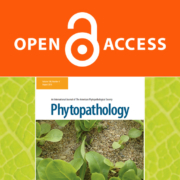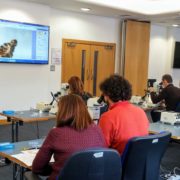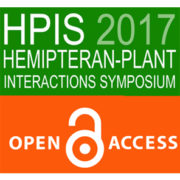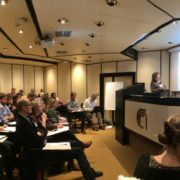Genetic variation of ‘Candidatus Liberibacter solanacearum’ haplotype C and identification of a novel haplotype from Trioza urticae and stinging nettle
Authors
M. Haapalainen (1), J. Wang (1), S. Latvala (2), M. T. Lehtonen (3), M. Pirhonen (1), and A. I. Nissinen (2)
Affiliations
(1) University of Helsinki, Department of Agricultural Sciences, P.O. Box 27, FI-00014 University of Helsinki, Finland. (2) Natural Resources Institute Finland (Luke), Natural Resources, Tietotie, FI-31600 Jokioinen, Finland. (3) Finnish Food Safety Authority Evira, FI-00790 Helsinki, Finland.
Abstract
‘Candidatus Liberibacter solanacearum’ (CLso) haplotype C is associated with disease in carrots and transmitted by the carrot psyllid Trioza apicalis. To identify possible other sources and vectors of this pathogen in Finland, samples were taken of wild plants within and near the carrot fields, the psyllids feeding on these plants, parsnips growing next to carrots, and carrot seeds. For analyzing the genotype of the CLso-positive samples, a multilocus sequence typing (MLST) scheme was developed. CLso haplotype C was detected in 11% of the T. anthrisci samples, in 35% of the Anthriscus sylvestris plants with discoloration, and in parsnips showing leaf discoloration. MLST revealed that the CLso in T. anthrisci and most A. sylvestris plants represent different strains than the bacteria found in T. apicalis and the cultivated plants. CLso haplotype D was detected in 2 of the 34 carrot seed lots tested, but was not detected in the plants grown from these seeds. Phylogenetic analysis by unweighted-pair group method with arithmetic means clustering suggested that haplotype D is more closely related to haplotype A than to C. A novel, sixth haplotype of CLso, most closely related to A and D, was found in the psyllid T. urticae and stinging nettle (Urtica dioica, Urticaceae), and named haplotype U.
This work was partially supported by funding from the European Union’s Horizon 2020 Pest Organisms Threatening Europe research and innovation program under grant agreement number 635646.
Published on July 19, 2018 by PHYTOPATHOLOGY








